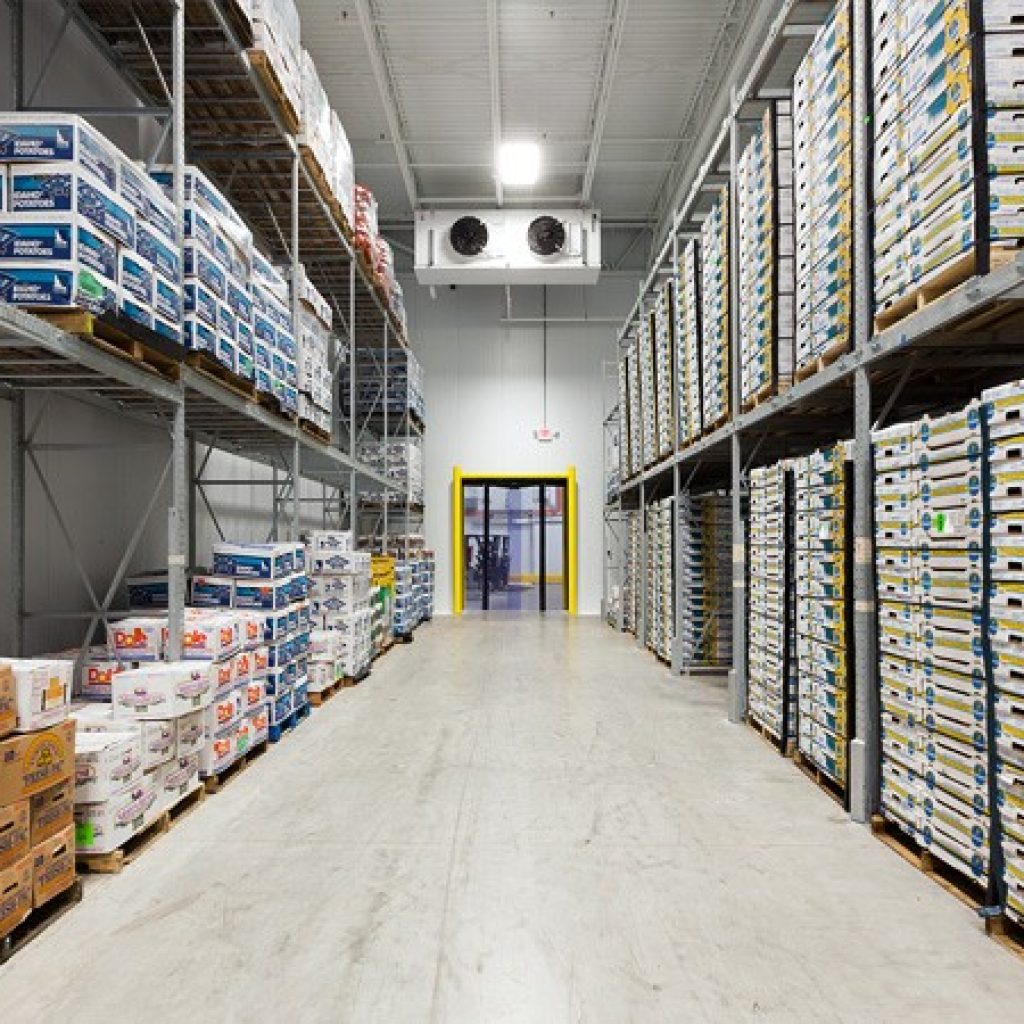India’s pharma logistics, warehousing costs 15% higher than other countries.

The GS1 India study showed more than 50 per cent of Pharma and medical devices manufacturers lose 1 per cent of their sales due to expiry and pilferage.
Best-in-class pharma companies globally have an inventory period of 64 days as compared to Indian counterparts that have 98 days, according to a latest study released by GS1 India, a global supply chain standards organization. Along with that, the overall supply chain, logistics and warehousing costs in India is 15 per cent higher compared to other countries, the report added.
The report titled “Building resilience in India’s post-Covid healthcare supply chain” is based on a comprehensive study done by GS1 and Association of Healthcare Providers (India) (AHPI) on the healthcare supply chain in India.
The current challenges of the pharmaceutical and medical devices supply chain are counterfeit medicines and devices, pilferage, wastage, medication errors and lack of timely availability putting patient safety at risk. Drug counterfeiting has become a problem of a significant magnitude globally.
The GS1 India study showed more than 50 per cent of Pharma and medical devices manufacturers lose 1 per cent of their sales due to expiry and pilferage. Substandard, Spurious, Falsely Labelled, Falsified and Counterfeit (SSFFC) medical products are often designed to appear genuine and unidentifiable from authentic medical products. Their growth was previously a menace, but it has only escalated manifold with the outbreak of the COVID-19 pandemic.
The findings of the study released on 29th April show in the current scenario, over 80 per cent of the Pharmaceutical and Medical Devices Manufacturers do not have product visibility till point of care.
Nearly 69 per cent of survey respondents (Pharma and Medical Devices Manufacturers) do not have the capability to implement product recall beyond the distributor due to lack of end to end visibility.
Healthcare sector has been at the centre of COVID crisis. The challenges were numerous, beginning with managing multitude of patients affected, to managing the supply chain disruptions. In the midst of it all, the sector had to continuously innovate and come out with new ways of taking care of patients. Supply Chain disruptions during the pandemic led to drug and device shortage, which had a severe impact on the patients. This, coupled with reported fake and spurious medical products entering the supply chain, made the task of the stakeholders involved all the more challenging.
“As far as healthcare is concerned, the role of standardization in GS1 standards is going to play a very vital and important role. Healthcare is all about outcomes. It is an industry, it also has financial implications, but what’s the most important are the health outcomes. And the health outcomes are dependent a lot on how the care is delivered. One of the biggest problems in modern health care is errors. And that is something which can be resolved very easily by having this standardized technology and standardization in terms of nomenclature and product information,” said Ashutosh Raghuvanshi, MD and CEO, Fortis Healthcare Ltd.
“One of the other important elements in healthcare is traceability. The traceability of implants, medication etc is extremely important and that is something which has to be done long term. If that is integrated into the digital systems of healthcare delivery systems, that would go a long way to improve the outcomes and also making healthcare safer,” he said.
The report noted that making the healthcare supply chain resilient will require end-to-end supply chain visibility through digitalization and use of global standards which facilitate interoperability.
All the stakeholders including the government, the regulators and the industry need to work together to build a resilient healthcare supply chain, the report said.
India’s healthcare sector has witnessed rapid growth over the last five years, exhibiting a compounded annual growth rate of 16 per cent since 2016. The industry will reach a market size of US$ 877 billion (₹65 lakh crores) by 2030 if it continues to grow at the same pace. As a result of the rapid and sustained growth, the sector augmented jobs and economic development, directly employing 4.7 million people, the report noted.
The report highlights that India’s healthcare supply chain faces five key challenges: fragmentation, complexity, opaqueness, lack of agility and inefficiency. Furthermore, the economic and patient safety cost that result from counterfeiting, pilferage and product recall is also discussed and supplemented with insights gathered through our primary research with industry stakeholders.
Global cold chain market is valued at USD 253.06 billion in 2021, and the market size is projected to reach USD 436.52 billion by 2028, at a CAGR of 8.10%. The cold chain industry is growing rapidly, thanks in part to the increasing demand for medical supplies and food products that are safe and dependable.
As cold chain market continues to grow, there are a number of challenges that need to be addressed, including ensuring that products remain cold throughout the supply chain. Every year, over $750 billion are lost due to improper food safety handling procedures, poor cold chain logistics, lack of proper facilities, and insufficient training for those personnel working in the cold chain. In addition, global pharma sales of over $260 billion is highly dependent on cold chain. On any given day, over 92 billion pound of perishable food is refrigerated across North America cold chain market.
Poor Management of Cold Chain Warehouses Costs India $ 14 billion Every Year
There are a number of benefits that can be gained from using robots in cold chain warehouses. For example, they can help to reduce waste and overstock, while also improving accuracy and consistency across the supply chain. In addition, they can help to improve safety standards by helping to prevent accidents and injuries. As per recent study done by SkyQuest Technology Consulting, crops worth more than $14 billion are lost due to poor cold chain supply management in India alone. This represents the reality of India cold chain market. More than 15% population in India face hunger every day because of poor cold chain management and logistics. Currently, the country can produce more than required food but unorganized logistics, traffic delay, poor cold chain warehouse management are leading to loss of more than 35% of the total agricultural produce. The 35% agricultural waste is enough to feed countries like the UK, Germany, France, and Italy for one year.
This problem stems from the shortage of cold storage facilities in the country. Although there are a lot of them, they are concentrated in few states and therefore inaccessible to the nation. According to Emerson, less than 10% of Indian cold storage is in Tamil Nadu and during certain periods, even this number can drop as low as 2%. A recent government edict has revealed that there is a 90% deficit in cold storage facilities in India. This lack of facilities and overuse by potatoes are compounded by the inappropriate allocation of existing capacity. There is only 0.0239% of cold storage allotted to Tamil Nadu, a state that exports $600 million worth of fresh fruit per year.
As the cold chain industry continues to undergo modernization, robots are likely to play an increasingly important role. They offer significant benefits for companies operating in this sector, and are likely to become even more popular in the future.
Covid Impact Encouraged Suppliers in Cold Chain Market to Evaluate their Strategies
Following the COVID-19 pandemic and the subsequent downfall of many overseas suppliers, supply chain leaders are conducting a shift in their production and distribution. Some companies expand or relocate abroad, while others are bringing their operations domestically. The primary goal of these shifts is to regain control over the entire supply chain by reducing risk factors that are outside of their control. However, these shifts are not perfect, as reshoring does not offer supply chain resilience or agility without broader organizational transformation.
Over the past two years, cold chain market operators have made themselves experts in dealing with enormous challenges. They have found new routes to deal with barriers, cooperated with others more, shifted customer needs and goals, and are long-term resilient and improve the market revenue.
In Covid-19 Pandemic, Europe faced the worst supply chain disruption global cold chain market. In fact, most of the European countries witnessed around 70% disruption. On the other hand, the US witnessed around 50% disruption. This is majorly attributed to shortage of labor and stringent government regulation that were in place to reduce the risk of acquiring infection. Latin America emerged as the worst hit by shortage of labor as most of the workers failed to resume work due to covid fear.
The cold chain is a critical part of any pandemic preparedness plan – it’s the system that ensures vaccines and medicines remain safe and effective. The high demand for storage space during the 2019-2021 pandemic underscores the importance of having a robust cold chain infrastructure in place.
Pharmaceutical companies were particularly hard hit by the pandemic, as demand for vaccine storage grew exponentially. In some cases, distributors were forced to triple or quadruple their inventory in order to meet customer demand. In other cases, businesses had to scramble to find new storage facilities, as their old ones became overwhelmed.
Growing Focus on Modernization of Cold Chain Warehouses
The cold chain is one of the most important aspects of the food and medicine supply chain. It’s responsible for keeping food safe and fresh while it travels from the farm to grocery store to end user. A lack of modernization in the cold chain can lead to contaminated food and a loss of revenue for businesses. In 2016, there was a 16% increase in the number of food recalls due to issues with the cold chain. This is primarily due to problems with refrigerated trucks and railcars. The following year, there was a 26% increase in the number of recalls due to problems with the cold chain. If these issues are addressed with modern solution market size can increase by a great extent.
According to industry analysts, the cold chain is becoming increasingly complex and requires more attention from businesses. This is especially true for companies that produce perishable goods. To stay ahead of the curve, many are investing in modernization projects such as automated data management systems and RFID tracking. By doing so, they can ensure that their products reach consumers safely and without issue.
The modernization of cold chain warehouses is a movement that is growing in popularity across the global cold chain market. Companies are focusing on the ability to store food products in a way that keeps them safe and fresh. This is important because it helps to keep customers happy, as well as keeping food products from going bad. There are a number of companies that are focusing on this area of modernization. Some of these companies are able to offer innovative solutions that help to improve the cold chain process. They also have the ability to provide support for larger businesses, which means that they can help to improve the overall efficiency of the food system.
One company that is focusing on the modernization of cold chain warehouses is Capgemini SA. They offer a number of solutions that help to improve the management of the cold chain process. These include their Cloud-Based Warehouse Management Solution and their Food Safety Platform. Their platform provides support for a variety of different systems, which means that businesses can easily integrate it into their existing processes. Another company that is focused on the modernization of cold chain warehouses is PCC Technology Limited. They offer a number of solutions that help to improve the management and flow of information throughout the cold chain process.
Cold Chain Outsourcing is On the Rise as Pharmaceutical Industry Keep Losing $35 billion Each Year
The cold chain outsourcing industry is booming, and for good reason. By outsourcing the logistics of the cold chain process, businesses can reduce costs, improve efficiency, and optimize their production processes.
In the global cold chain market, pharma companies lose billions of dollars every year because of inadequate cold chain supply, temperature excursion, and transportation. To maintain safety, it is important to properly control the cold chain. In the future, even more sales will depend on a good cold chain; 30 of the top 50 drugs need cold chain management by 2022 and by that time, it will be worth close to $150 billion. The cold chain must be flexible and reliable, especially when the supply of gene and cell-based therapies is expected to increase. This means that compliance with regulatory requirements will increase, along with the reliability of the cold chain. Every year, millions of shipments arrive at the companies but due to lack of proper cold chain they went on to go in waste and dent the brand image further.
Since the cold chain is expensive and time intensive, some manufacturers are outsourcing logistics to make their process more efficient, which is expected to give more impetus to growth of cold chain market. Outsourcing results in efficiency, flexibility, reliability and sustainability. Pharma companies can consolidate resources from various countries since they can be UPSed or sent on a boat to comply with global regulatory requirements.
The benefits of cold chain outsourcing are many. For starters, cold chain outsourced logistics can help businesses save on storage costs. Additionally, by relying on a professional cold chain provider, businesses can be sure their products are maintained at consistent temperatures throughout the supply chain. This can ensure product quality and safety.
Furthermore, by implementing a robust cold chain system, businesses can optimize their overall production process. This can lead to increased efficiency and reduced waste. In short, cold chain outsourcing is an important strategy for businesses of all sizes looking to improve their performance and achieve maximum value from their products.
Adoption of Net Zero Cold Chain is On Rise in Global Cold Chain Market
There are a range of opportunities that will reduce the energy requirement of refrigeration systems, including developing technologies. As we move into the 2030, we can expect buildings to incorporate structures and approaches to store food with less heat and cold storage facilities.
The adoption of net zero cold chain is on the rise, as companies in the cold chain market strive to improve their sustainability efforts. The concept of net zero cold chain is simple: cold products must remain at a temperature below the point where they can be processed or stored. This reduces the environmental impact of cold chains and helps ensure products are safe to consume. Cold chains are an important part of supply chain management, and they have a significant impact on the environment. Net zero cold chains help to protect food safety by preventing the spread of foodborne illnesses. They also reduce energy consumption and greenhouse gas emissions.
In line with this, many companies in the are starting to adopt net zero cold chains in order to improve their sustainability efforts. Some large retailers, such as Unilever and Walmart, have already achieved net zero status for some of their products. Others, such as PepsiCo and Coca-Cola, are working towards net zero status for all of their products.
Impact of Consumer Inflation on Cold Chain Market
The global cold chain market is expected to grow at a CAGR of 5.8% during the forecast period 2021-2025. The growth is mainly attributable to the increase in the demand for fresh produce and pharmaceuticals, as well as the increasing adoption of advanced technologies in this market. However, growing consumer inflation is posing a major challenge to the cold chain market.
As per a report by SkyQuest Technology Consulting, consumer inflation is estimated to rise from 6.4% in 2021 to 9.2% March 2022. This will put pressure on retailers and food processors to keep prices unchanged, which would result in a decline in demand for cold chain goods and services. Additionally, rising healthcare costs will also cause a decrease in spending on vaccines, antibiotics, and other pharmaceuticals that are stored at low temperatures.
However, despite these challenges, the cold chain market is expected to grow due to the increasing awareness about its benefits among consumers and businesses. For example, initiatives such as the Coordinated Global Initiative for Action on Food Safety (CGIAR)’s Food Safety Vision 2035 aim to make food safer and more reliable by improving cold chain management. Additionally, companies are investing in cold chain solutions that offer enhanced security and efficiency.
The market for the cold chain industry is witnessing growth due to rising consumer inflation. The increasing prices of food and other consumables are motivating customers to adopt more efficient cold storage methods. The adoption of advanced technologies such as the use of RFID tags and sensors to track food items throughout the cold chain is also boosting the market. However, there are challenges faced by the cold chain market due to consumer inflation. These challenges include increased manufacturing costs, increased security risks, and increased environmental impact.
North America Cold Chain Market Employs More than 63,000 People and Stores 262 billion Pounds Perishable Food
North America cold chain market is worth $62.5 billion and is expected to grow at a CAGR of 8.5%. The primary drivers for this growth are the increasing demand for healthy food products and the continuous increase in the number of businesses that need to maintain a safe and secure supply chain. Apart from this, several factors that are contributing to this growth, including technological advancements, increasing consumer awareness about the benefits of cold storage, and the increasing use of e-commerce. Every year, the country loses over $18 billion worth perishable items and pharmaceuticals while exporting.
This is especially true in US and the country is the largest consumers of processed food that includes, poultry and red meat. Apart from this, the country has stringent government regulations in place which compel the manufacturers and providers engaged in the cold chain market adhere to the regulations and avoid heavy penalty to if failed to meet them.
In North America, more than 63,000 people are employed in the cold chain market. Out of which, over 92% are full time permanent employees. Moreover, over 262 billion pounds of perishable food is stored in North American GCCA member warehouses each year.
The United States, with cold storage facility at 156 million cubic meters, was the single largest country market, followed by India at 150 million cubic meters and China at 131 million cubic meters.










